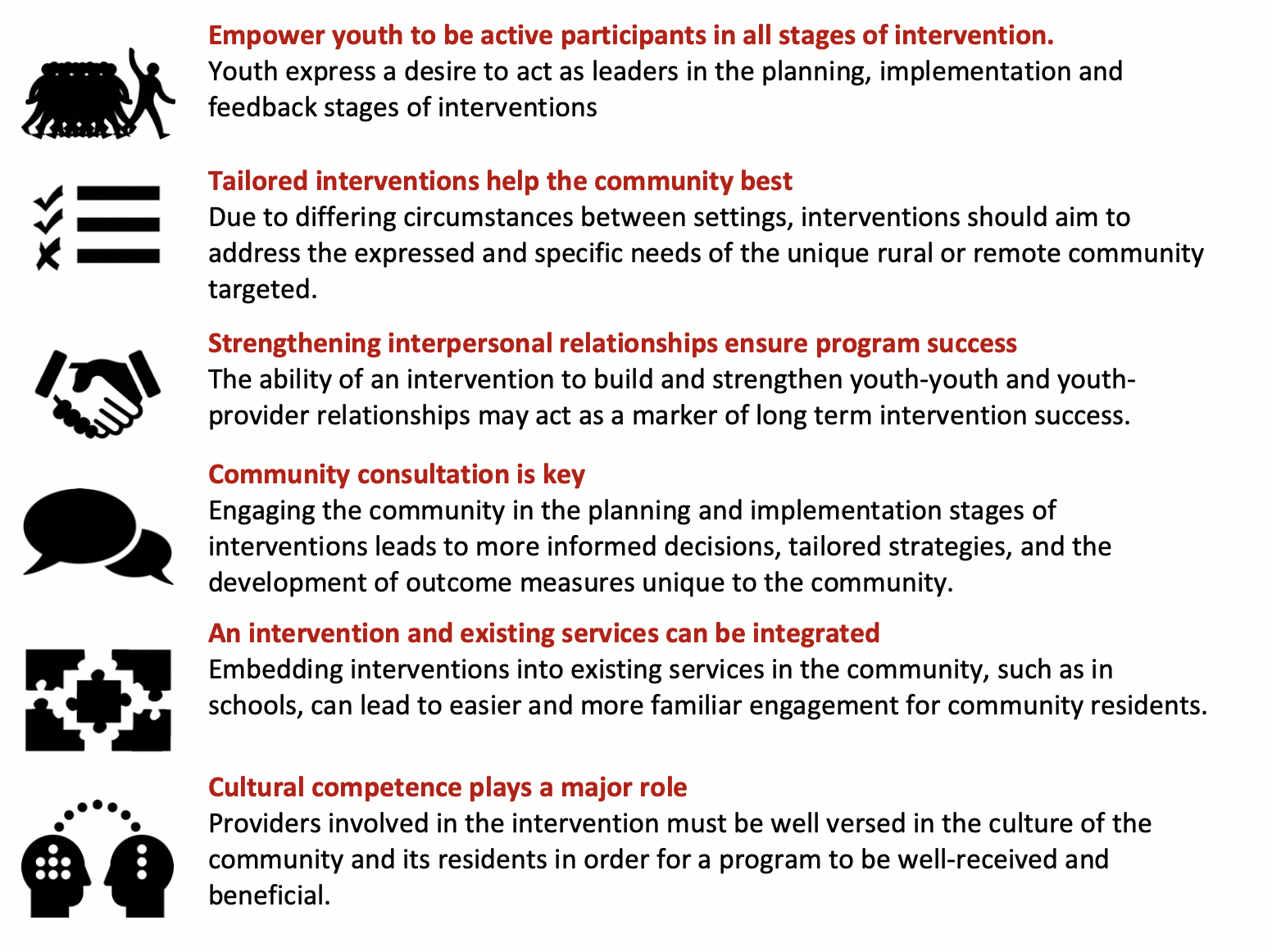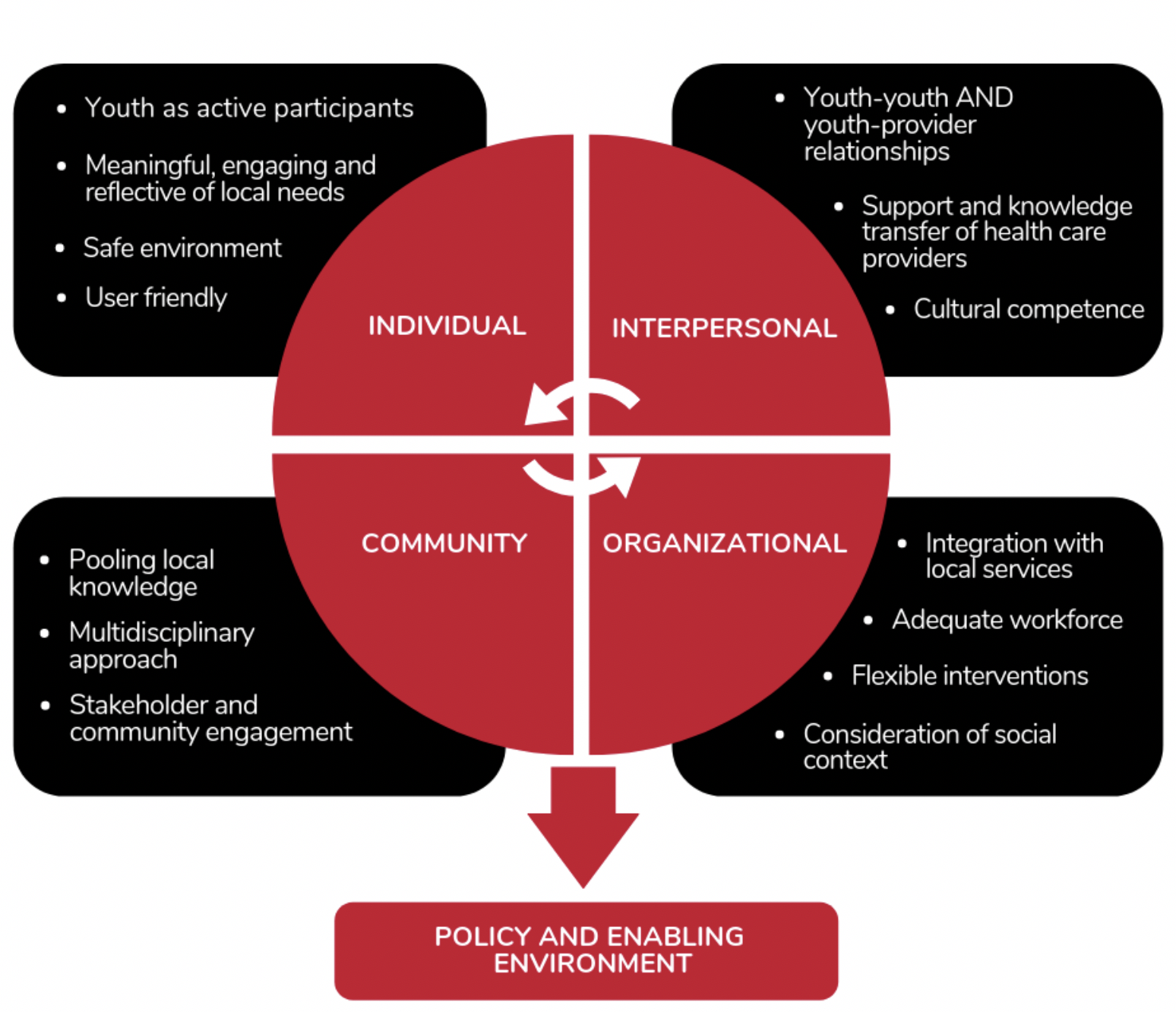Report- Interventions for Rural and Remote Youth Mental Health
Waid C, Steven S, Sinclair L, Priest L, Petrie S, Carson DB & PA Peters. (2019). Report: Interventions for rural and remote youth mental health. Spatial Determinants of Health Lab, Carleton University: Ottawa, ON. DOI: 10.22215/sdhlab/2019.4
A high quality PDF of this report with references is available for download.
Rural and remote communities in both Australia and Canada have a higher burden of mental illness relative to their urban counterparts. Suicide rates, particularly, are higher across all age groups among men in rural communities as compared to metropolitan areas. Mental health issues are especially present in younger populations within these communities. Additionally, rural and remote communities tend to have higher proportions of Indigenous origin individuals, who face additional challenges and service barriers.
Rural and remote communities often encounter significant barriers to accessing mental health care. Individuals from these communities may be serviced solely by general health care providers that are not trained in mental health treatment. Travelling away from the community to alleviate this issue only further hinders accessibility as these individuals must travel larger distances to access specialized health services. When services are accessed, those from rural and remote communities are met with longer wait times than their urban counterparts. With no specialized treatment within the rural or remote community and inaccessible treatment outside the community, mental health care must shift to informal caregivers and the community as a whole.
Rural and remote communities are often not trained in mental health care. Interventions to address rural and remote youth mental health are needed to equip communities with the tools and skills to overcome access barriers and support community members. A review of recent literature related to rural and remote youth mental health interventions was conducted. The aim of the review is to characterize these mental health interventions in Australia and Canada and examine how they relate to youth.
Key Findings

Interventions and the Social Environment
Previous literature surrounding mental health interventions highlights the importance of addressing mental health risk factors and lifestyle changes on the level of the individual. No significant attention is paid to the social environment of that individual and its relation to mental health. Given that rural and remote communities are often characterized by a high degree of social connectedness, research and health care providers should consider the dynamic nature of the social environment unique to these communities. Following this concept, the thematic analysis of findings in this review was conducted at various levels of the Social Ecology Model (SEM), which includes (1) individual, (2) interpersonal, (3) community, (4) organizational, and (5) policy and enabling environment.
Much of the literature regarding facilitators of mental health interventions in rural and remote communities highlights the need to harness the social capital and resiliency of these communities. Further, the inclusion of youth as active participants promises sustainable change that reflects local needs. Stigma towards those who access the intervention was one identified individual barrier to rural and remote youth mental health interventions. In a community with a high degree of social proximity, this stigma can be rapidly disseminated.
Failure to foster interpersonal relationships was identified across various interventions as a significant barrier to program success. Social support is closely linked to enhanced mental health, so interventions should focus largely on building and strengthening positive interconnection between individuals. In many interventions identified, strong youth peer-peer relationships resulted in participants being better able to support others and appreciate that they are not alone in their diagnosis. Similarly, strong youth-mental health care provider relationships help to ensure communication between youth and staff in schools, as well as increase the number social ties between staff and students.
Future mental health interventions for rural and remote youth should be focused on including the engagement of multiple stakeholders and the members of the community. Failing general health services in rural and remote communities have been identified to be, in part, the result of lacking a coordinated strategy and and partnership with local industry and stakeholders. Future interventions should consider embedding interventions within familiar existing services and identified eHealth technologies that best fit the needs of the unique community so that interventions are accessible and inviting to residents.
A Proposed Framework
Future mental health interventions for rural and remote youth should be evidenced-based and informed by the community’s members and stakeholders. We have proposed a framework, based on the Social Ecology Model, that aids in addressing the specific needs of rural and remote communities.

Previous mental health interventions in these communities have been constructed according to urban-based norms, without taking into account the reduced healthcare work force, cultural norms and service inaccessibility that characterize rural and remote communities. It is insufficient to address mental health without addressing its context. This proposed model incorporates many models of health and addresses the unique social environment of a rural or remote community. Bidirectional relationships between individuals and their social environment are critical to this model and should be incorporated into future mental health intervention strategies.